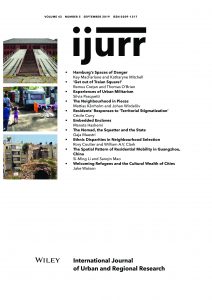Germany today is experiencing the strongest upsurge of right‐wing populism since the second world war, most notably with the rise of Pegida and Alternative für Deutschland. Yet wealthy global cities like Hamburg continue to present themselves as the gatekeepers of liberal progress and cosmopolitan openness. This article argues that Hamburg’s urban boosterism relies on, while simultaneously obscuring, the same structures of racial violence that embolden reactionary movements. Drawing on the work of Walter Benjamin and Allan Pred, we present an archaeology of Hamburg’s landscape, uncovering some of its ‘spaces of danger’—sites layered with histories of violence, many of which lie buried and forgotten. We find that these spaces, when they become visible, threaten to undermine Hamburg’s cosmopolitan narrative. They must, as a result, be continually erased or downplayed in order to secure the city as an attractive site for capital investment. To illustrate this argument, we give three historical examples: Hamburg’s role in the Hanseatic League during the medieval and early modern period; the city under the Nazi regime; and the recent treatment of Black African refugees. The article’s main contribution is to better situate issues of historical landscape, collective memory and racialized violence within the political economy of today’s global city.
Details
Written by:
Key Macfarlane & Katharyne Mitchell
Digital Object Identifier (DOI)
10.1111/1468-2427.12814
About DOI

